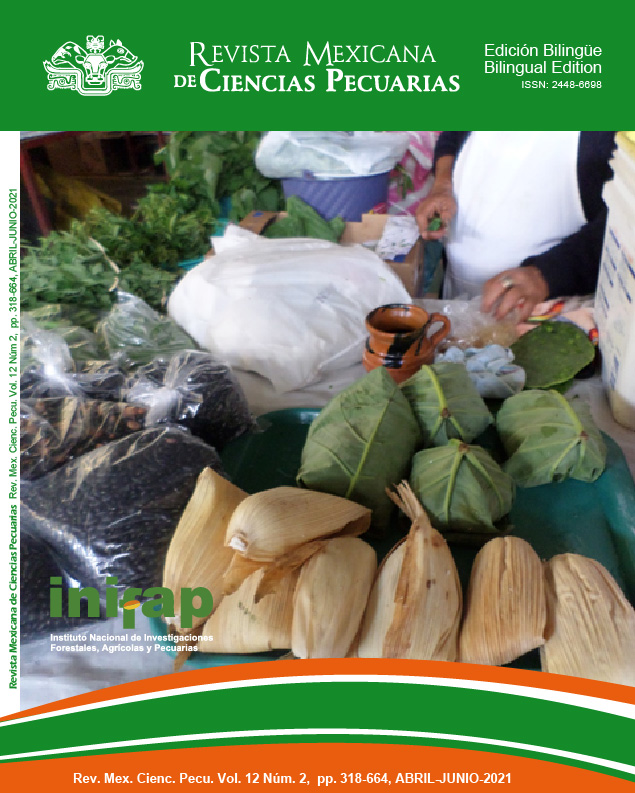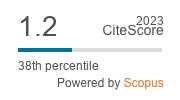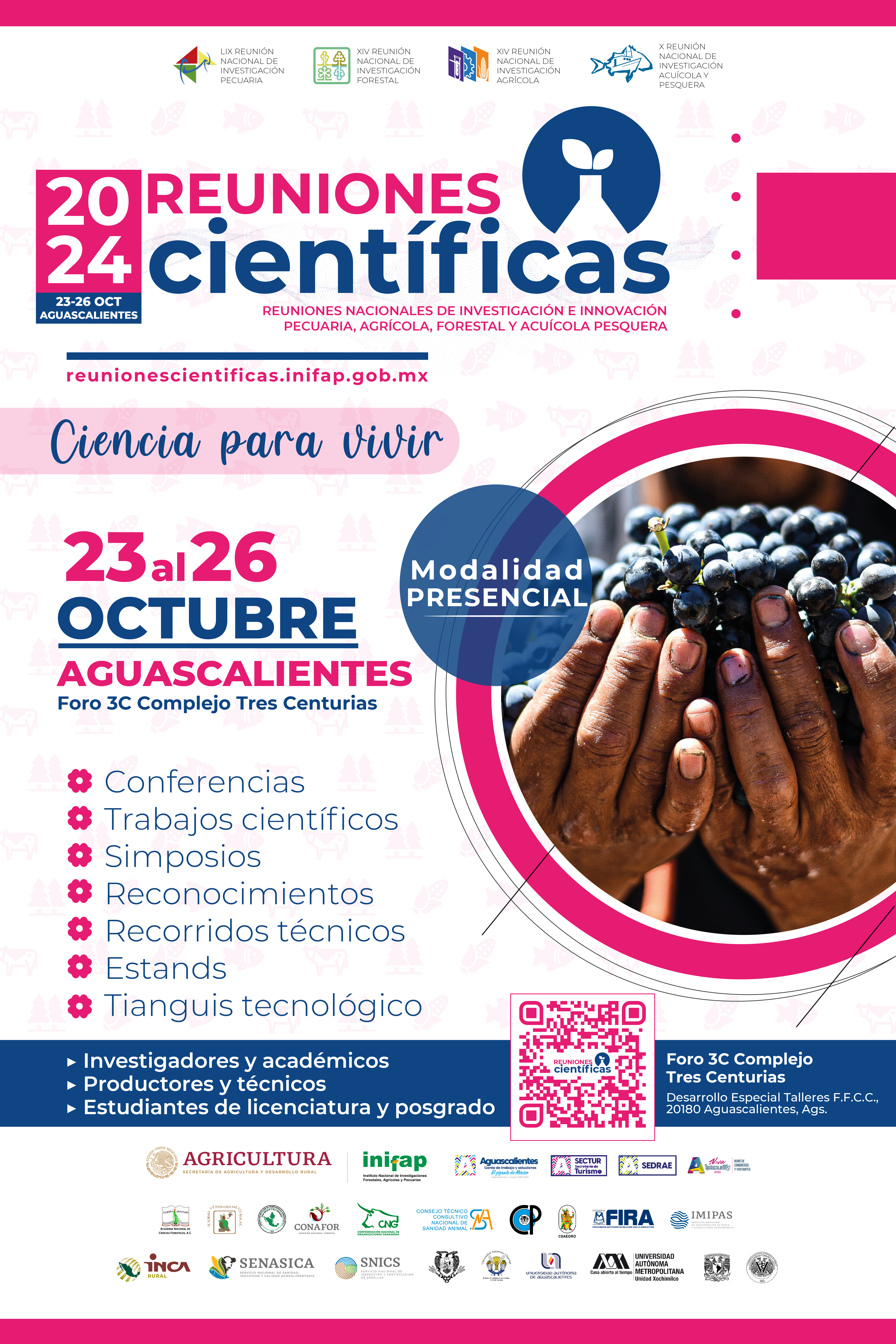Bioelectrical impedance analysis (BIA) in animal production: Review
DOI:
https://doi.org/10.22319/rmcp.v12i2.5821Palabras clave:
Body composition, Impedance, Technology, Zootechnical productionResumen
Bioelectrical impedance analysis (BIA) is a method based on the different levels of opposition to the flow of an ionic current through the different body tissues. Results are expressed by primary measures of resistance (Rs) and reactance (Xs). From such measures, equations are applied to determine the phase angle (PA) and impedance (Z). Bioimpedance analysis has been indicated as a reliable and precise method to determine the body composition and nutritional status in humans. BIA has recently been adapted to be applied on animal production. Therefore, the aim of this review is to provide an analysis on the potential use of bioelectrical impedance on zootechnical production. Through BIA, correlations among bioelectrical measures and tissue composition of swine, bovine, ovine, bubaline and fish carcasses can be established. In this regard, a growing number of demands were led by more precise and cost-effective methods to evaluate the body composition in the zootechnical sector, in which the analysis of bioelectrical impedance proved to be a promising and minimally invasive technology to replace traditional methods.
Descargas
Citas
Moro AB, Pires CC, Silva LP, Dias AMO, Simões RR, Pilecco VM, et al. Prediction of lamb body composition using in vivo bioimpedance analysis. Meat Sci 2019; (50):1-6.
Schumacher LL, Viégas J, Naetzold S, Tonin TJ, Rocha L, Cauduro L, et al. Use of electrical bioimpedance analysis to evaluate the quality of bovine raw milk. S Afr J Anim Sci 2019;(49):728-734.
Cintra TCF, Canola JC, Borges NC, Carciofi AC, Vasconcelos RS, Zanatta R. Influência de diferentes tipos de eletrodos sobre os valores da bioimpedância corporal e na estimativa de massa magra (MM) em gatos adultos. Ci Anim Bras 2010;(11):149-155.
Eickemberg M, Oliveira CC, Roriz AKC, Sampaio LR. Bioimpedância elétrica e sua aplicação em avaliação nutricional. Ver Nutr 2011;(24):883-893.
Bera TK. Bioelectrical impedance methods for noninvasive health monitoring: A review. J Med Eng 2014;1-28.
Berg EP, Neary MN, Forrest JC, Thomas DL, Kauffman RG. Assessment of lamb carcass composition from live animal measurement of bioelectrical impedance or ultrasonic tissue depths. J Anim Sci 1996;(74):2672-2678.
Arantes TB. Bioimpedância como ferramenta de análise da composição corporal de Piava, Leporinus obsutidens. [Dissertação de Mestrado]. Brasil, DF: Universidade Federal de Santa Catarina; 2014.
Daza A, Mateos A, Ovejero I, Bote CJC. Prediction of body composition of Iberian pigs by means bioelectrical impedance. Meat Sci 2006;(72):43-46.
Zollinger BL, Farrow RL, Lawrence TE, Latman, NS. Prediction of beef carcass salable yield and trimmable fat using bioelectrical impedance analysis. Meat Sci 2010; (84):449-454.
Altmann M, Pliquett V, Suess R, Borell E. Prediction of lamb carcass composition by impedance spectroscopy. J Anim Sci 2004;(82):816-825.
Moro AB, Pires CC, Silva LP, Menegon AM, Venturini RS, Martins AA. Prediction of physical characteristics of the lamb carcass using in vivo bioimpedance analysis. Animal 2019;(13):1744-1749.
Sarubbi F, Báculo R, Balsarano B. Bioelectrical impedance analysis for the prediction of fat-free mass in buffalo calf. Animal 2008;(2):1340–1345.
Grimnes S, Martinsen O. Bioimpedance and bioelectricity basics. 2nd ed. Oxford, UK: Elsevier-Academic Press; 2008.
Lukaski HC, Johnson PE, Bolonchuk PE, Lykken G. Assessment of fat-free mass using bioelectrical impedance measurements of the human body. Am J Clin Nutr 1985;(41):810–817.
Khalil SF, Mohktar MS, Ibrahim F. The theory and fundamentals of bioimpedance analysis in clinical status monitoring and diagnosis of diseases. Sensors 2014;(4):10895-10928.
Avril DH, Lallo C, Mlambo V, Bourne G. The application of bioelectrical impedance analysis in live tropical hair sheep as a predictor of body composition upon slaughter. Trop Anim Health Prod 2013;(45):1803-1808.
Kyle UG, Bosaeus I, Lorenzo AD, Deurenberg P, Elia M, Gómez JM. Bioelectrical impedance analysis part I: review of principles and methods. Clin Nutr 2004;(23):1226–1243.
Bera KT. Bioelectrical impedance and the frequency dependent current conduction through biological tissues: A short review. IOP Conf. Ser.: Mater Sci Eng 2018; (331).
Kumar G, Kasiviswanathan U, Mukherjee S, Mahto SK, Sharma N, Patnaik R. Changes in electrolyte concentrations alter the impedance during ischemia-reperfusion injury in rat brain. Physiol Meas 2019;(10):1-22.
Guedes DP. Clinical procedures used for analysis of the body composition. Rev Bras Cineantropometria & Desempenho Hum 2013;(15):1-17.
Cox MK, Heintz R, Hartman K. Measurements of resistance and reactance in fish with the use of bioelectrical impedance analysis: sources of error. Fish Bull 2011;(109):34-47.
Hartman KJ, Phelan BA, Rosendale JE. Temperature effects on bioelectrical impedance analysis (BIA) used to estimate dry weight as a condition Proxy in Coastal Bluefish. Mar Coast Fish 2011;(3):307-316.
Barbosa-Silva MCG, Barros AJD, Wang J, Heymsfiel SB, Pierson RN. Bioelectrical impedance analysis: population reference values for phase angle by age and sex. Am J Clin Nutr 2005;(82):49-52.
Baumgartner RN, Chumlea WC, Roche AF. Bioelectric impedance phase angle and body composition. Am J Clin Nutr 1998;(48):16-23.
Lukaski HC. Evolution of bioimpedance: a circuitous journey from estimation of physiological function to assessment of body composition and a return to clinical research. Eur J Clin Nutr 2013;(67):2–9.
Selberg O, Selberg D. Norms and correlates of bioimpedance phase angle in healthy human subjects, hospitalized patients, and patients with liver cirrhosis. Eur J Appl Physiol 2002;(86):509-516.
Britto EP, Mesquita ET. Bioimpedância elétrica aplicada à insuficiência cardíaca. Rev SOCERJ 2008; (21):178-183.
Cox MK, Heintz R. Electrical phase angle as a new method to measure fish condition. Fish Bull 2009;(107):477–487.
Lukaski HC. Methods for the assessment of human body composition: traditional and new. Am J Clin Nutr 1987;(46):537-556.
Jenkins TG, Leymaster TGKA, Turlington LM. Estimation of fat-free soft tissue in lamb carcasses by use of carcass and resistive impedance measurements. J Anim Sci 1988;(66):2174−2179.
Berg EP, Marchello MJ. Bioelectrical impedance analysis for the prediction of fat-free mass in lambs and lamb carcasses. J Anim Sci 1994;(72):322-329.
Moro AB, Galvani DG, Montanholi YR, Bertemes-Filho P, Venturini RS, Martins AA, da Silva LP, Pires CC. Assessing the composition of the soft tissue in lamb carcasses with bioimpedance and accessory measures. Meat Sci 2020;(169):1-20.
Bertotti FS. Sistema de biotelemetria passiva e técnica de medição para aquisição da impedância elétrica de tecido animal post mortem. [Tese Doutorado]. Brasil, DF: Universidade Tecnológica Federal do Paraná;2010.
Damez JL, Clerjon S, Said A, Lepetit J. Dielectric behavior of beef meat in the 1-1500 kHz range: Simulation with Fricke/Cole-Cole model. Meat Sci 2007;(77):512–519.
Swantek PM, Crenshaw JD, Marchello MJ, Lukaski HC. Bioelectrical impedance: a nondestructive method to determine fat-free mass of live market swine and pork carcasses. J Anim Sci 1992;(70):169-177.
Gibbs LR, Cadaret CN, Swanson RM, Beede KA, Posont RJ, Schmidt BT. Body composition estimated by bioelectrical impedance analyses is diminished by prenatal stress in neonatal lambs and by heat stress in feedlot wethers. Transl Anim Sci 2019;(3):1691–1695.
Fukuda O, Hashimoto D, Ahmed I. Bioelectrical impedance analysis for estimating marbling score of live beef cattle in Japan. IEEE IEEM 2016;(10):1508-1512.
Silva ER, Afonso J, Monteiro JA, Morais R, Cabo RA, Batista AC, Guedes CM, Teixeira A. Application of bioelectrical impedance analysis in prediction of light kid carcass and muscle chemical composition. Animal (2017);1-7.
Afonso J, Guedes C, Santo V, Morais R, Silva J, Teixeira A, Silva S. Utilization of bioelectrical impedance to predict intramuscular fat and physicochemical traits of the beef Longissimus thoracis et Lumborum Muscle. Foods 2020;(9):1-11.
Hartmann KJ, Margraf FJ, Hafs AW, Cox MK. Bioelectrical impedance analysis: A new tool for assessing fish condition. Fisheries 2015;(40):590-600.
Wuenschel MJ, McElroy WD, Oliveira K, Richard S. McBride RS. Measuring fish condition: an evaluation of new and old metrics for three species with 2 contrasting life histories. Can J Fish Aquat Sci 2018:1-64.
Champion C, Hobdayb AJ, Pecla GT, Traceya SR. Maximising the utility of bioelectrical impedance analysis for measuring fish condition requires identifying and controlling for sources of error. Fish Res 2020;(229):1-10.
Cox MK, Hartman KJ. Non-lethal estimation of proximate composition in fish. Can J Fish Aquat Sci 2005;(62):269–275.
Zaniboni-Filho E, Hermes-Silva S, Weingartnerb M, Jimeneza JE, Borbab MR, Fracalossi DM. Bioimpedance as a tool for evaluating the body composition of suruvi (Steindachneridion scriptum). Braz J Biol 2015;(75):239-244.
Falke JA, Bailey LT, Fraley KM, Lunde MJ, Gryska AD. Energetic status and bioelectrical impedance modeling of Arctic grayling Thymallus arcticus in interior Alaska rivers. Environ Biol Fish 2019;(102):1337–1349.
Fitzhugh GR, Wuenschel MJ, Mcbrid RS. Evaluation of bioelectrical impedance analysis (BIA) to measure condition and energy allocated to reproduction in marine fishes. J Phy Conf Ser 2010;(224):1-4.
Moyle PB, Cech JJ. Fishes an introduction to ichthyology. 5nd ed. NJ, USA: Prentice Hall, Upper Saddle River; 2004.
Zavadlav S, Lackovi´c I, Kovacevic DB, Greiner R, Putnik P, Filipec SV. Utilizing impedance for quality assessment of European squid (Loligo vulgaris) during chilled storage. Foods 2019;(624):1-12.
Garner SB, Boswel KM, Van Der Ham JL, Cowan JH. Use of bioelectric impedance analysis to assess total body condition and predict energy density in juvenile Atlantic croaker. Trans Am Fish Soc 2012;(141):1117-1125.
Dibble KL, Yard MD, Ward DL, Yackulic CB. Does bioelectrical impedance analysis accurately estimate the physiological condition of threatened and endangered desert fish species? Trans Am Fish Soc 2017;(146):888-902.
Fan X, Lin X, Wu C, Zhang N, Cheng Q, Qi H, Konno K, Dong X. Estimating freshness of ice storage rainbow trout using bioelectrical impedance analysis. Food Sci Nutr 2020;(9):154–163.
Yuan P, Miyazaki R, Liang J, Hirasaka K, Tachibana K, Taniyama S. A convenient and nondestructive method using bio impedance analysis to determine fish freshness during ice storage. Fish Sci 2018;(84):1099–1108.
Hafs AW, Hartman KJ. Influence of electrode type and location upon bioelectrical impedance analysis measurements of brook trout. Trans Am Fish Soc 2011;(140):1290-1297.
Felice CJ, Madrid RE, Oliveira JM, Rotger VI, Valentinuzzi ME. Impedance microbiology: quantification of bacterial content in milk by means of capacitance growth curves. J Microbiol Methods 1999;(35):37–42.
Mabrook MF, Petty MC. Effect of composition on the electrical conductance of milk. J Food Eng 2003;(60):321-325.
Durante E, Becari W, Lima FAS, Peres HEM. Electrical impedance sensor for real-time detection of bovine milk adulteration. IEEE Sens J 2016;(16):861-865.
Mucchetti G, Gatti M, Neviani E. Electrical conductivity changes in milk caused by acidification: determining factors. J Dairy Sci 1994;(77):940-944.
Tozzetti DS, Bataier MBN, Alemida LR. Prevenção, controle e tratamento das mastites bovinas: revisão de literatura. Rev Cient Eletrônica de Med Vet 2008;(6):1-7.
Veiga EA, Bertemes-Filho P. Bioelectrical impedance analysis of bovine milk fat. J Phys Conf Ser 2012;(407):1-5.
Bertemes-Filho P, Valicheski R, Pereira RM, Paterno AS. Bioelectrical impedance analysis for bovine milk: preliminary results. J Phys Conf Ser 2010;(224):012133.
Das S, Sivaramakrishna M, Biswas K, Goswami B. Performance study of a ‘constant phase angle based’ impedance sensor to detect milk adulteration. Sensor Actuat A-Phys 2011;(167):273–278.
Santos LF, Coelho KS, Cunha AF, Nunes MF, Falcão JPM. Influência de parâmetros físico químicos do leite na detecção de mastite subclínica bovina por condutividade elétrica. Rev Cient Univiçosa 2015;(7):1-6.
Descargas
Publicado
Cómo citar
-
Resumen791
-
PDF 644
-
PDF437
Número
Sección
Licencia
Los autores/as que publiquen en la Revista Mexicana de Ciencias Pecuarias aceptan las siguientes condiciones:
De acuerdo con la legislación de derechos de autor, la Revista Mexicana de Ciencias Pecuarias reconoce y respeta el derecho moral de los autores/as, así como la titularidad del derecho patrimonial, el cual será cedido a la revista para su difusión en acceso abierto.

Esta obra está bajo una Licencia Creative Commons Atribución-NoComercial-CompartirIgual 4.0 Internacional.






